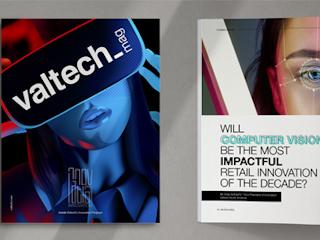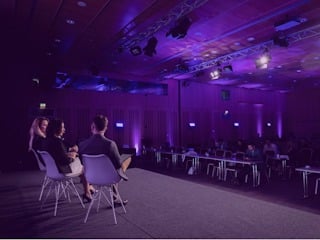Through our research study, we uncovered four primary motivations for why consumers engage in virtual world experiences:
- Build Human Connections. By far, the most common theme we heard from participants was that they use these worlds to build new and existing relationships. We heard countless stories from users who log on to hang out with their close friends and family, reconnect with people around the real world, and meet new users that they wouldn’t otherwise.
“I have a lot of friends who are international and live in different countries, so I use it to talk to people I can't see in real life easily… It feels like a more personal connection than just calling someone on the phone because it's entertaining and it gives us something to talk and laugh about. It feels like what we would be doing if we were in person.” - Interview Participant
- Freedom of Exploration. Many users log in to enjoy the freedoms they lack in the physical world. With relatively few barriers, digital worlds represent a space to explore new environments and activities that users would not be able to in the real world. This has especially contributed to the growth of metaverse engagement since the pandemic as visiting these worlds has become a new form of “sightseeing” for many.
“The first thing I think of is escape. It’s a chance to do something different from real life or do similar things with people I can't normally see in real life. I can try or see new things that I can’t normally.” - Interview Participant
- Creativity & Self-Expression. Many visitors use these worlds to express new sides of their personality and identity. They spend hours creating and customizing their avatar or virtual space and exploring personal tastes that they can’t in the real world. For example, users commonly build their avatars to look like themselves (so that their friends can recognize them), but with a few “upgrades” that they wouldn’t or couldn’t make in real life.
“I think of it as ‘fun me’. If I could do anything I wanted with no restrictions, that is what I would look like. I change the hairstyle, add purple streaks, and put on more makeup than I do in real life. I like to look a little like myself but outside of what I could do in real life.” - Interview Participant
- Opportunity for Achievement. Surprisingly, while gaming is a top activity in these virtual spaces, when we dug in deeper, competition was actually lower on the list of reasons for visiting. We attribute this to the fact that many worlds have been built for the purpose of gaming, but users have largely adopted them to fulfill the other needs stated above. Still, many users do enjoy the competitive nature and sense of achievement they feel in honing their craft and reaching new milestones.
“I like competition so any leaderboard or challenge … I like giving that a try as well." - Interview Participant
Whether you are creating a virtual store, branded virtual environment, or brand activation within an existing world, it is important to keep these core motivations in mind when designing your experience.
How Can Brands Create Digital Customer Experiences Geared Toward Metaverse Mindsets?
48% of respondents said they would rather browse for clothes in a virtual world than on a website.
There is a huge opportunity for retail brands to engage with customers differently in the metaverse if they keep their consumer motivations and needs in mind when designing the experience. To help set brands up for success, we created these guiding principles to build engagement, based on core metaverse motivations.
Make room for socialization
Requests to join friends are the biggest contributing factor for why people try new immersive virtual experiences. Brands building these experiences should brainstorm ways to build community among their visitors and encourage users to invite their friends.
- Plan community events in the virtual space
- Help shoppers interact with one another
- Make it easy to shop with friends
- Reward visitors for referring their friends
PACWORLD combines fashion, technology and community in a socially-driven environment that lets players be owners, with the goal of making their malls as popular as possible. Players can upgrade shops to attract customers and invite their friends.
Encourage exploration & discovery
Brands should use this opportunity to help consumers discover the story of the brand in ways they never could before. However, keep in mind that when navigating new experiences, users lean on familiar cues to successfully engage. Balance novelty with familiarity to reduce the learning curve associated with your space.
- Create experiences that defy the limits of the real world
- Build interactive storylines that allow users to discover additional content and experiences as they explore
- Provide a behind-the-scenes look into your brand
- Include familiar elements and interactions
Louis Vuitton created Louis the Game, a virtual adventure where consumers become the protagonist, Vivienne, and travel in search of 200 birthday candles, unique accessories, and 30 exclusive NFTs. Along the way, consumers uncover milestones in Louis Vuitton’s brand history.
Provide outlets for creativity and self-expression
- Customers are drawn to virtual environments that allow them to explore different sides of their personality and identity. Brands should help visitors express themselves by providing creative outlets in their virtual space.
Give visitors the ability to co-create their products and experiences
- Help them create unique takeaways that they can bring out into both worlds
Nike secured a CryptoKicks patent which pairs a physical pair of shoes with an NFT. Owners can “breed” two NFTs to create a shoe “offspring.” Nike has said that it would design the physical version of the resultant offspring into custom shoes.
Incorporate gamification
Gamified experiences represent a unique opportunity for brands to foster lasting engagement with their customers. Brands can utilize the game design principles inherent in virtual worlds to create experiences that make users feel invested and keep them coming back for more.
- Incorporate challenges and leaderboards that provide a sense of achievement
- Offer fun ways to earn tokens or points and redeem them for rewards
- Embed hidden treasures that keep consumers searching
Forever 21 is gamifying fashion retail and encouraging users to express their individuality in Roblox. Users can customize and manage their own retail stores as they try to become the "top shop.” Along the way, they can earn points, roleplay and discover rare, hidden items.

Building an Omnichannel Customer Experience Strategy
It is important to align your metaverse strategy with the rest of your omnichannel customer experience. Rather than thinking about the metaverse as a separation from or replacement for your e-commerce or physical spaces, imagine how it can complement and fill gaps in the rest of your customer journey. Provide the ability to enter your metaverse experience from other channels and include contextualized CTAs throughout that encourage users to take the next step in engaging with your brand.
67% of customers say that their standard for good customer experience is higher than ever before, and 73% say that one very good customer experience raises their expectations of other companies (according to Salesforce).
As consumer mindsets continue to evolve and expectations continue to rise, it is important to meet consumers where they are and design with their motivations and needs in mind.
Launching Your Explorations into the Metaverse
Many of these principles tie closely with those used by game designers and themed entertainment specialists around the world. Luckily, here at Valtech, we have a team of experts in that space. If you are interested in more tips and tricks on how to create immersive storylines that put users at the heart of the story, check out our article on the 7 Principles for Creating Immersive Worlds or our Themed Entertainment Studio website to learn more!
Valtech combines a unique blend of retail, themed entertainment, and connected experience strategy expertise that positions us perfectly to help clients imagine and design engaging experiences in virtual worlds. Reach out if you want help determining if the metaverse is right for your business goals or designing an experience that will leave a lasting impact on your target audience. We are looking forward to hearing from you!










